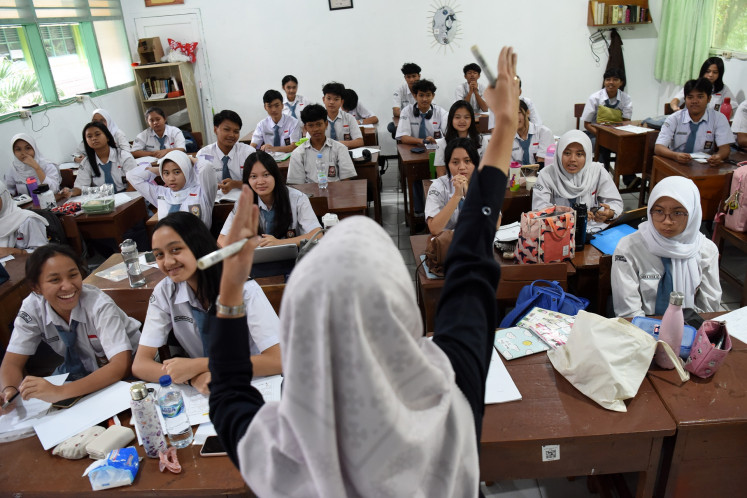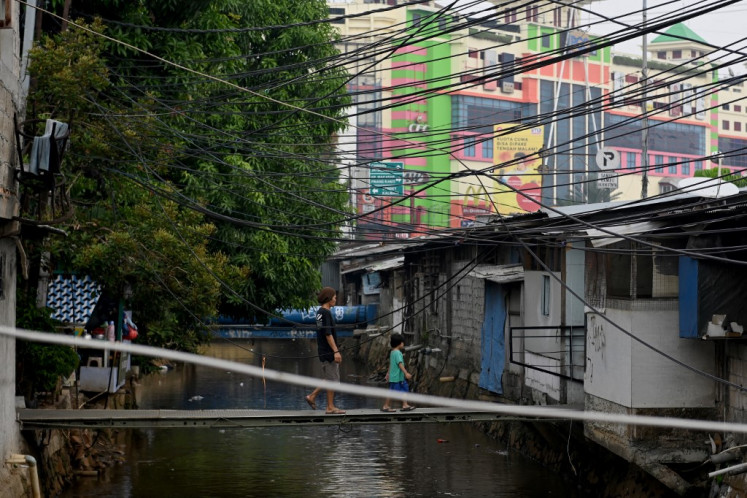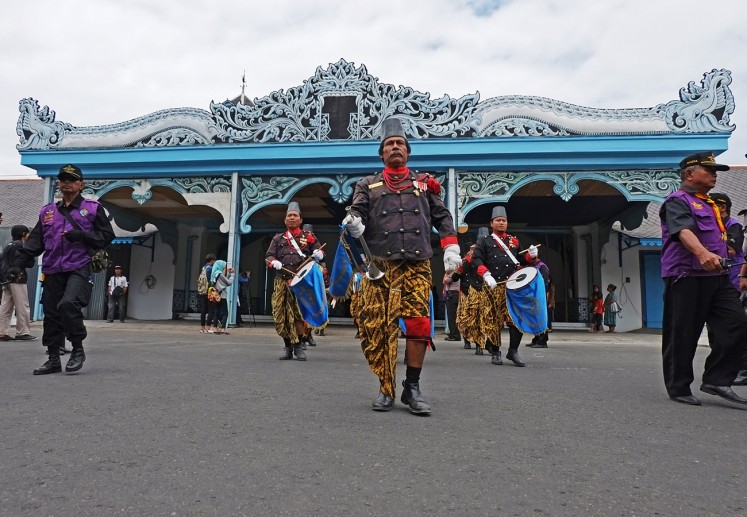Stronger, better military
The new units should improve the TNI as a whole in responding to external threats, a job that used to be entrusted to the three branches of the military and their respective territorial commands or fleets. Coordination among them matters as they have overlapping responsibilities, even though the line of command of each is clearly defined.
Change text size
Gift Premium Articles
to Anyone
 Indonesian Military (TNI) commander Air Chief Marshall Hadi Tjahjanto (front center), Army chief of staff Gen. Andika Perkasa (second left), Navy chief of staff Admiral Siwi Suka Adji (second right) and Air Force chief of staff Air Chief Marshall Yuyu Sutisna (right) chat with Special Operations Command (Koopssus) commander Brig. Gen. Rochadi (left) during the inauguration of Koopssus at the TNI headquarters in Cilangkap, Jakarta, on Tuesday. (ANTARA FOTO/Sigid Kurniawan)
Indonesian Military (TNI) commander Air Chief Marshall Hadi Tjahjanto (front center), Army chief of staff Gen. Andika Perkasa (second left), Navy chief of staff Admiral Siwi Suka Adji (second right) and Air Force chief of staff Air Chief Marshall Yuyu Sutisna (right) chat with Special Operations Command (Koopssus) commander Brig. Gen. Rochadi (left) during the inauguration of Koopssus at the TNI headquarters in Cilangkap, Jakarta, on Tuesday. (ANTARA FOTO/Sigid Kurniawan)
A
t 74 years old, the Indonesian Military (TNI) has continued to boost its capability to deal with both conventional and nonconventional threats to the state, its people, territory and natural resources. It is against the backdrop of the changing nature of the danger that TNI reorganization materialized recently after 10 years of waiting.
Just over a week before turning 74, the TNI inaugurated three Joint Defense Regional Commands (Kogabwilhan) that will not only strengthen national defense but also improve the interoperability of the three branches of the military, particularly in the event of foreign aggression or insurgency. The new skeleton of the TNI structure envisages rapid and effective deployment of troops, who will be armed with new, high-tech weaponry.
Apart from transnational crimes, tension as a result of border disputes and rivalry among major powers seeking regional hegemony are clear and present dangers that the TNI has to anticipate and tackle, which is why the formation of Kogabwilhan is timely. The establishment of the three new joint commands also explains why defense spending tops projected government expenditure for 2020.
TNI chief Air Chief Marshal Hadi Tjahjanto has installed Rear Adm. Yudo Margono as the commander of Kogabwilhan I, based in the Riau Islands; Rear Marshal Fadjar Prasetyo as the commander of Kogabwilhan II, based in East Kalimantan; and Maj. Gen. Ganip Warsito as the commander of Kogabwilhan III, based in Papua. The three generals will answer directly to the TNI chief.
The new units should improve the TNI as a whole in responding to external threats, a job that used to be entrusted to the three branches of the military and their respective territorial commands or fleets. Coordination among them matters as they have overlapping responsibilities, even though the line of command of each is clearly defined.
Strategic defense aside, the TNI’s reorganization has come just in time as it is experiencing a surplus of middle-ranking officers. Reports show the TNI has had difficulty in providing jobs for about 500 colonels, prompting the government to consider amending the 2004 TNI Law to allow more active military personnel to hold certain civilian jobs. The ensuing controversy raised fears that the move would restore the New Order doctrine of dual function for the military.
The formation of the Kogabwilhan is by no means a quick fix, but it will ease anxiety among idle officers as they will now have a chance to fill new posts on offer in the three TNI units. Innovation in human resources management will help the TNI find a long-lasting solution to the problem.
Suspending the recruitment of new cadets would not solve the problem of an “oversupply” of officers as the current size of the military is far from enough to protect the country’s vast territory and huge population. Instead, the Kogabwilhan are likely to increase the number of generals.
To fulfill the goals of TNI reform, especially its pledge to build a professional force, human resources development within the TNI will require commitment to meritocracy. The TNI needs clear and fair career planning that ensures only the best win promotion and join the ranks of generals.









